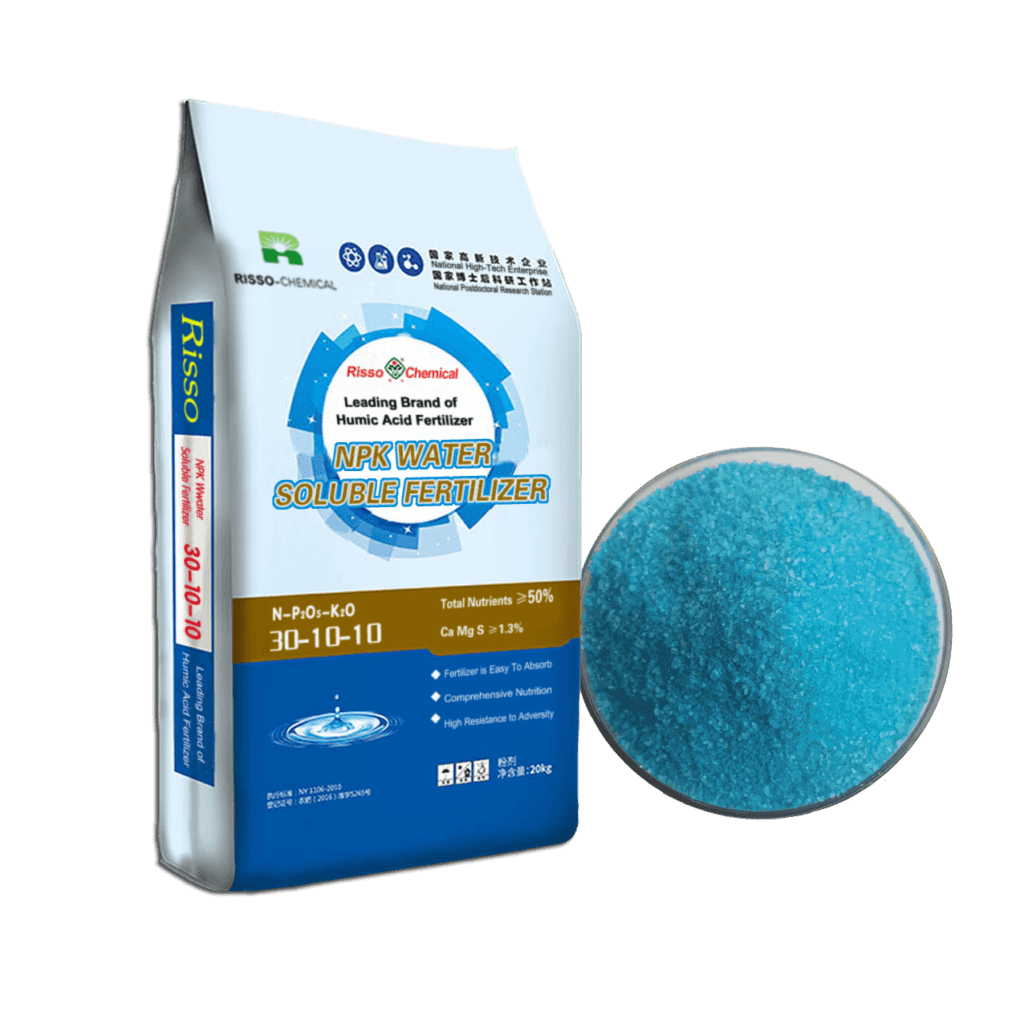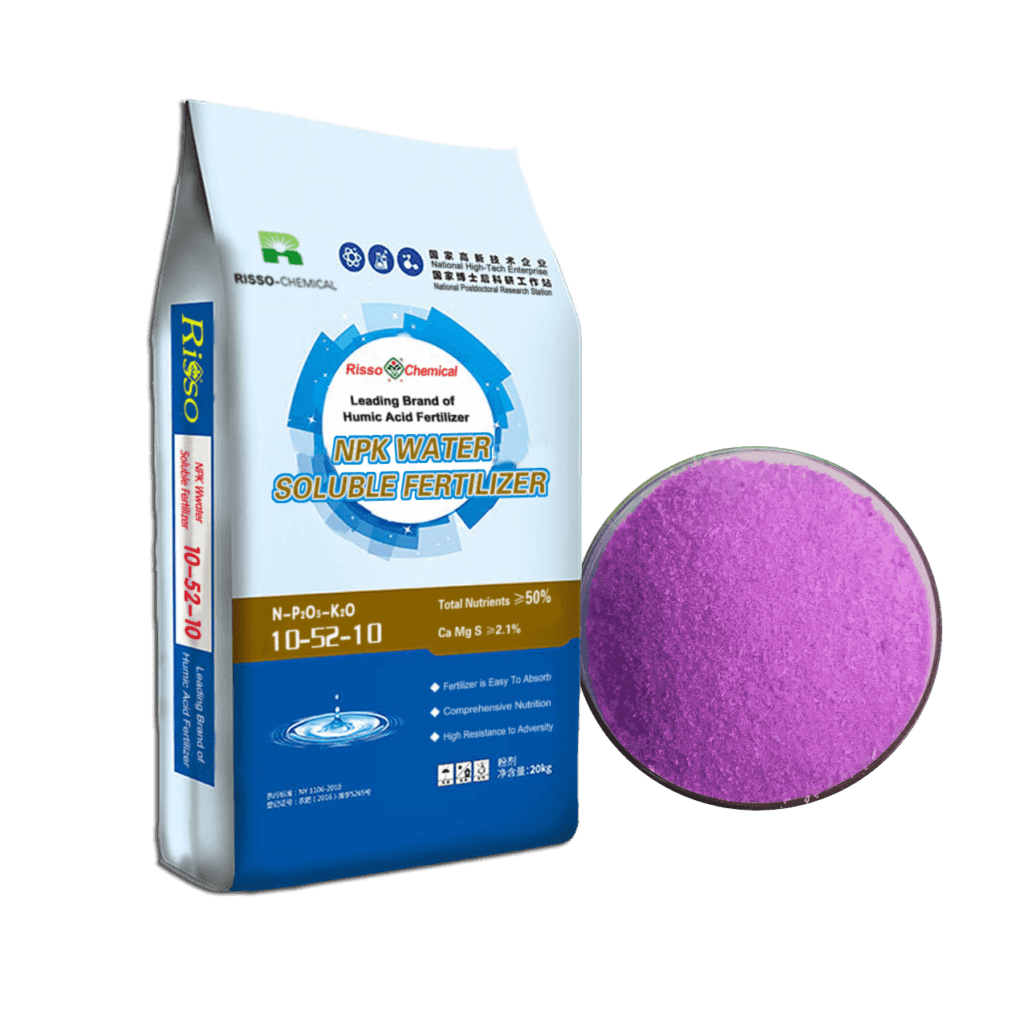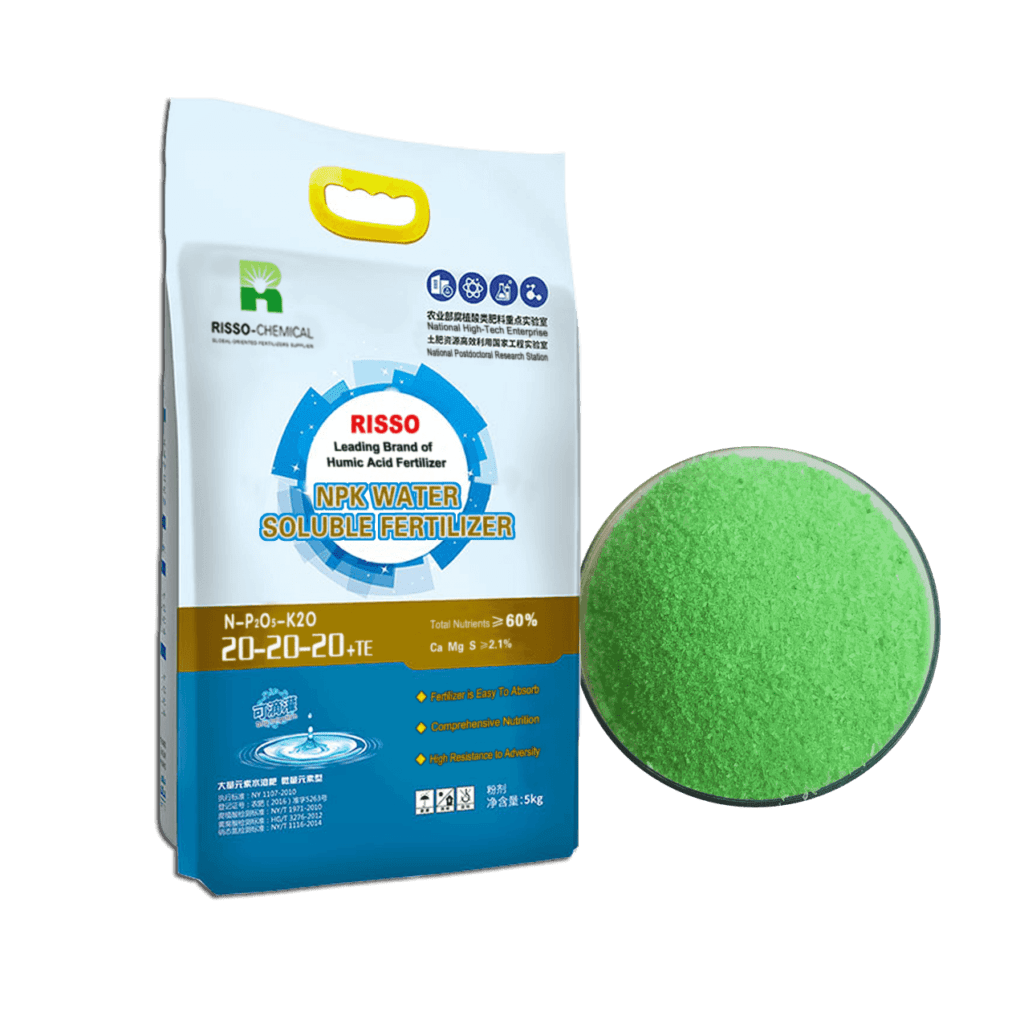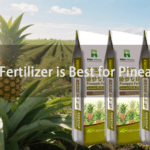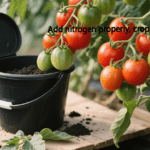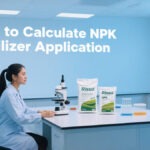Let more growers get greater benefits
How to Use Water-Soluble Fertilizers: A Professional Guide
- Industry News
- January 6, 2025
- 9:53 am

Water-soluble fertilizers are a fast and efficient way to provide plants with essential nutrients. Unlike traditional fertilizers, they dissolve completely in water, allowing plants to absorb nutrients quickly for better growth and higher yields.
To get the most out of water-soluble fertilizers, it’s important to use them correctly. This guide will cover the best application methods, proper dilution, and timing to help you achieve optimal results while avoiding common mistakes. Whether you’re a home gardener or a large-scale grower, this article will help you apply water-soluble fertilizers effectively for healthier plants and better harvests.
Table of Contents
1. What Are Water-Soluble Fertilizers?
Water-soluble fertilizers are compound fertilizers that completely dissolve in water, allowing for rapid absorption by plant roots and foliage. They typically contain essential macronutrients such as nitrogen (N), phosphorus (P), and potassium (K), as well as micronutrients like calcium (Ca), magnesium (Mg), iron (Fe), and zinc (Zn). such as NPK 20-20-20+TE with EDTA chelation enhances micronutrient absorption.
Compared to traditional fertilizers, water-soluble fertilizers offer the following advantages:
Fast absorption and high efficiency: Nutrients are directly absorbed by plants, reducing waste.
Versatile application methods: Suitable for drip irrigation, sprinkler irrigation, fertigation, and foliar spraying.
Controlled fertilization: Allows precise adjustment of nutrient supply based on plant growth needs.
2. Methods of Applying Water-Soluble Fertilizers
2.1 Soil Drenching
Soil drenching involves dissolving the fertilizer in water and applying it directly to the root zone of crops. It is suitable for field crops, vegetables, and fruit trees.Key Considerations:
- Water the plants after fertilization to help nutrients penetrate the root zone.
- Avoid high concentrations to prevent root damage.
2.2 Fertigation (Drip Irrigation Fertilization)
Drip irrigation systems deliver water-soluble fertilizers directly to plant roots, reducing nutrient loss and improving efficiency. This method is widely used in greenhouse cultivation and large-scale farming.Key Considerations:
- Ensure complete dissolution of the fertilizer to prevent clogging of drip emitters.
- Adjust fertilization concentration based on the crop’s nutrient requirements.
2.3 Foliar Spraying
In this method, the fertilizer solution is sprayed onto plant leaves, allowing direct nutrient absorption through leaf stomata. This is particularly effective for addressing micronutrient deficiencies.Key Considerations:
- Choose optimal spraying times, avoiding strong sunlight and rainy weather.
- Control spray concentration to prevent leaf burn.
3. Proper Dilution and Application Frequency
3.1 How to Properly Dilute Water-Soluble Fertilizers?
The correct dilution ratio for water-soluble fertilizers depends on the type of fertilizer, crop requirements, and the manufacturer’s recommendations. Here are some general dilution guidelines:
Ⅰ. Common Dilution Ratios:
Leafy Vegetables: Dilute at 1:1000 to 1:1500 (1-1.5 grams per liter of water).
Fruit Trees and Field Crops: Dilute at 1:500 to 1:1000, depending on the growth stage.
Flowers and Potted Plants: Use a dilution of 1:1000, or slightly stronger at 1:800 during active growth.
Seedlings: Dilute at 1:1500 to prevent over-fertilizing.
Ⅱ. How to Calculate Dilution:
For a 1:1000 ratio, dissolve 1 gram of fertilizer per liter of water.
For larger quantities, adjust the amount of fertilizer accordingly. For example, for 10 liters of water, use 10 grams of fertilizer.
Ⅲ. Key Considerations:
Avoid High Concentration: Overly concentrated fertilizer can cause root burn, especially in hot conditions.
Avoid Low Concentration: Too diluted may fail to meet the plant’s nutritional needs.
Adjust as Needed: Increase dilution during the plant’s growth stages as required, particularly during periods of rapid growth.
3.2 Fertilization Timing and Frequency
Different crops require different fertilization schedules. The general guidelines are as follows:
| Crop Type | Fertilization Stage | Frequency |
|---|---|---|
| Leafy Vegetables | Growth Stage | Every 7-10 days |
| Fruit Trees | Flowering & Fruit Expansion | Every 10-15 days |
| Field Crops | Seedling & Tillering Stage | Every 15-20 days |
4. Essential Precautions When Using Water-Soluble Fertilizers
4.1 Avoid Over-Fertilization
- Maintain proper fertilization concentration: Excessive fertilizer use can cause salt accumulation and hinder plant growth.
- Apply fertilizers in smaller doses: Frequent, light applications improve nutrient absorption efficiency.
4.2 Consider Proper Timing
- Avoid high-temperature periods: Fertilize in the early morning or late afternoon to prevent excessive evaporation.
- Do not apply before heavy rain: This prevents nutrient leaching.
4.3 Optimize Nutrient Management with Water-Fertilizer Integration
- Adjust pH levels if necessary: Certain micronutrients require specific pH ranges for optimal absorption.
- Regularly clean drip irrigation systems: This prevents clogging and maintains uniform nutrient distribution.
Conclusion
By following these best practices, farmers and growers can maximize crop yield and quality while reducing fertilizer costs and environmental impact. If you have any questions about using water-soluble fertilizers, feel free to leave a comment!
Water soluble fertilizer Related Products
If you want to know other questions about Water-soluble fertilizer, please contact us and we will provide professional answers.
- Article
What will you get when touch?
✔ Quick & helpful reply within 6 hours.
✔ Tailored solutions for your project.
✔ One-stop product, tech, market
TRENDING
Want to find a China fertilizer manufacturer?
Risso will be your best choice; send us your request for your fertilizer details requirement.
TAIAN RISSO CHEMICAL FERTILIZER CO.,LTD
- Address: High-tech Development Zone, Taian City, Shandong Province
© Copyright 2017 RISSO CHEMICAL. All Rights Reserved.



